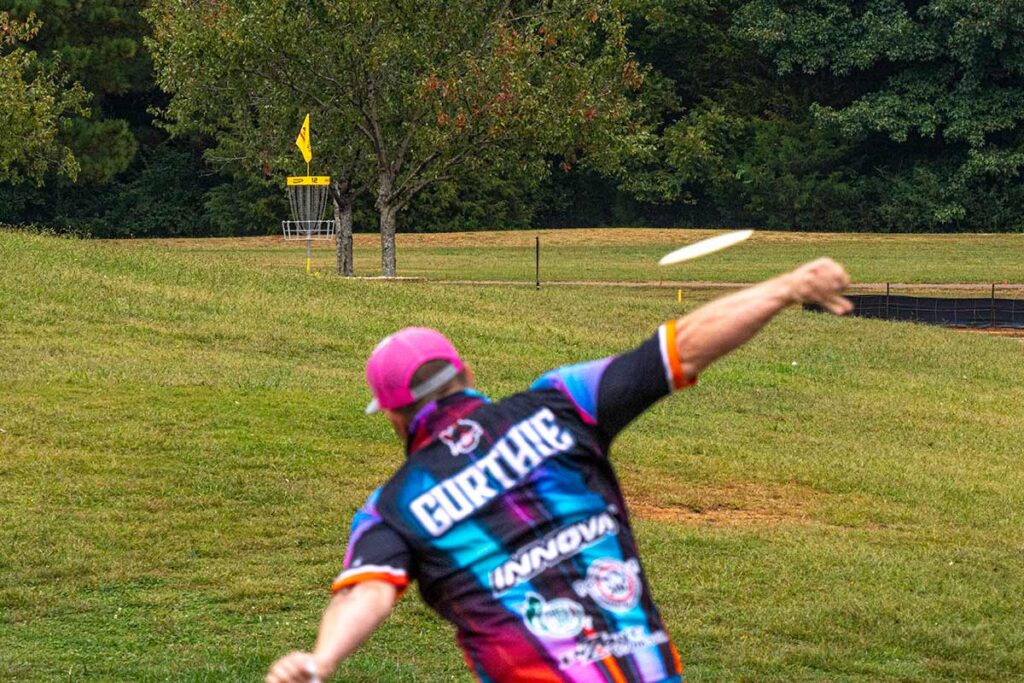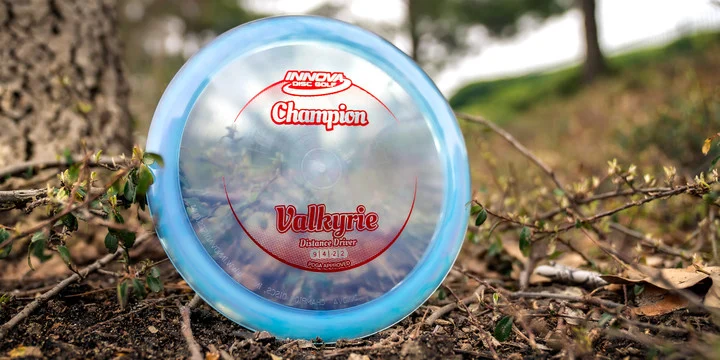Master Your Disc Golf Drives: 9 Tips for Maximum Distance
TOC
Table of Contents
Every disc golfer, from the beginner to the advanced player, would like to be able to throw farther off the tee pad. No matter what skill level you are currently at, there are few things that feel better than ripping a wide-rim driver down the fairway and getting a full flight out of your distance driver at your maximum distance. Those players who are lacking distance want to get the maximum distance out of their drives. Those who might already have a big arm may be looking for more consistency and accuracy with their high-speed driver.
Here are a few tips to help you get more disc golf distance, max distance, arm speed, driving distance and accuracy:
1. Improve Your Footwork
You will hear pro disc golfer players and commentators talk a lot about the “X Step” on their run-up. How and where you position your feet with each step forward on the tee pad will impact your distance capabilities. As in many sports like baseball or ball golf, the true power of a disc golf throw comes from your legs and hips. We recommend watching some videos of intermediate players and experienced players to look closely at their footwork. A proper X step will allow you to rotate and release your hips to generate max distance.
2. Pay Attention Upper Body Coordination
As your lower body loads up to generate the power, your upper body must also be doing its part. Your shoulders, arms and chest—and even your head—should be positioned in the right spots throughout your throwing motion. A good hip turn will give you a natural reach back with your throwing arm, and then it can snap through as you open your hips. When all your body parts are working together, you will gain power, accuracy and consistency.
3. Find Your Power Pocket & Whip
You may also hear professional disc golfers use the term “power pocket.” It is referring to your arm angles just before you release the disc. Imagine three sides of a perfect rectangle formed between your chest, your upper arm and your lower arm. As your elbow comes through at the end of your throw, this power pocket form will allow the lower arm and hand to create a snapping action as you release the disc. Innova co-founder, Dave Dunipace, refers to this energy as the “tip of the whip.” A leather whip concentrates all of its power and energy at the very tip with the distinctive whip crack, but it takes the right form and proper movement through the entire length of the whip to achieve such a dramatic result. In disc golf, this whip effect creates more acceleration at the release point.
4. Avoid Rounding
One of the most common problems for intermediate players and experienced players is rounding. This is when your throwing arm goes out and around your body in more of a circular motion rather than coming straight back and through the disc golf distance throw. Rounding may not sap much distance or arm speed away for a novice player who doesn’t have great footwork and form, but it will cause a lot of inconsistencies with your release point. If you routinely suffer from early releases and/or grip locks on your drives, then you are likely rounding your arm. Imagine how much easier it is to be consistent when throwing maximum distance driver shots if your arm is going back and through on a straight line versus going out and around. If you really want to get more distance and improve your disc golf game, you want to get rid of rounded throws.
5. Work on Your Timing
From your legs to your arms and upper body, there are several important moving parts during a disc golf drive. Professional players will tell you timing is so important to increase average drive distance. If everything isn’t synched up perfectly throughout your throw, you will lose power and minimize your distance potential. Ideally, the apex of your reach-back should coincide with the point when your hips are most turned. Then, you open up your hips first (before you start pulling your arm through) to generate more power and whip.
6. Remember to Follow Through

If you are avoiding rounding, then your arm is coming straight through across your body during your disc golf drive. Now, you want to work on your follow-through. Ideally, your arm should come through and you should be pointing right at your target after you release your golf disc. Keep in mind the target doesn’t necessarily mean the basket itself. You may be aiming further left or right depending on your shot selection (straight vs. hyzer vs. anhyzer). A good follow-through will also help prevent injuries to your knees, hips, lower back and shoulder because it releases tension on those key joints while throwing maximum distance.
7. Don’t Be Afraid to Disc Down
If you’ve been following the DGU Blog, you’ll realize that we always come back to disc selection (weight range, overstable discs, wide rim, understable discs, high-speed drivers, mid-range discs, slower discs, etc.) and flight ratings because it’s very important. All the tips above focus on form, but what discs you use to throw will also make a difference in your power potential. A beginner or intermediate-level disc golfer with a slower arm speed may find that they get better distance out of a less stable drivers, fairway drivers or even mid-ranges versus overstable distance drivers that the pros throw. Just because we call them “distance drivers” doesn’t mean they will offer the most distance to everyone. These are high-speed discs that require higher arm speeds to achieve their full flight characteristics. We recommend dialing your overall form and technique with mid-range discs and putters. Work your way up to fairway drivers and then ultimately up to distance drivers.
8. Let the Disc Do the Work
Lighter-weight discs and more understable discs with high glide ratings will also help you achieve more maximum distance with less effort. Rather than trying to crank over a max-weight distance driver like the Innova Star Destroyer for a maximum distance drive, work on a smooth release with a Tern, which is the same speed as a Destroyer distance driver (12 speed rating) but with significantly less stability. Of, you can disc down to a Valkyrie or Leopard3. The lower speeds and understability will likely make it much easier for you to throw for distance. Let the disc do the work for you. These will flip over more naturally and glide out with less effort. If you don’t have the power like the pros, you may not want to use the overstable discs that the pros use—at least not at first.
9. Remember Accuracy is Usually More Important than Distance

Even top players like Garrett Gurthie or James Conrad will lean on their Innova Wraiths distance drivers for many drives. As an 11-speed driver, a Wraith is still pretty fast, but it offers a neutral flight path and much more controllable for almost all players than a faster disc like a Destroyer, Corvette, another high speed distance driver. Calvin Heimburg uses his trusty Champion Eagle for many of his drives, and that’s only a 7-speed fairway driver. The lesson here is that throwing it as far as humanly possible isn’t always your best option. Disc down to to a fairway driver, mid-range disc or even a putter improve your accuracy and dial in your form.
Obviously, there are so many different distance tips out there. You can watch hundreds of YouTube videos. Most will teach you a lot of the same techniques and some might show you something new. Ultimately, you have to develop a form that is comfortable and repeatable for you. You may never be able to throw like Double G. Few people in the world can. That’s okay. You play your game and work on being the best player you can be. Distance usually comes naturally with time and practice.
Personalized Disc Recommendations
Just answer a few questions and we’ll send you personalized recommendations within 24 hours.
GET PRO TIPS


